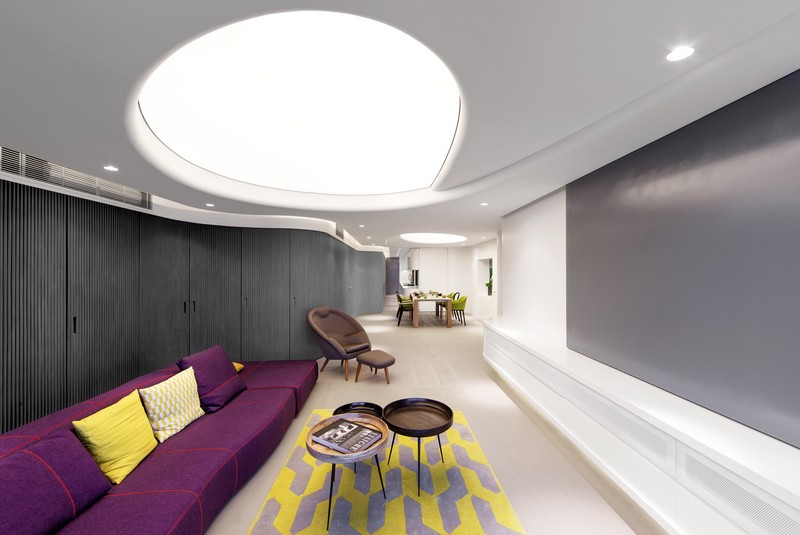In Hong Kong’s Mid-levels a stunning private residence is generating glowing praise for much more than the area’s standard attraction; some of the world’s most famous million dollar views.

The interiors of this 250 square metre space were designed by Nelson Chow, founder of uber-cool new practice NC Design & Architecture Ltd. (NCDA). Since opening shop in the SAR just over three years ago, numbers of their projects, such as the enchanting speakeasy restaurant and bar, Mrs Pound, have been drawing gasps of wonder, and winning plenty of awards.
Located on a tranquil site on Stubbs Road this residence, designed for Buick Management, is an open space defined by a 16 metre long sinuous wood wall, strong axial views and a luminous and dramatic ceiling oculi.
The house is structured around a continuous communal area of the living room, dining room, kitchen and bathroom. The gentle, undulating grey wood wall unifies these spaces, drawing occupants from the narrow interior kitchen area towards the wide living room with its grand vista of the Happy Valley Race course below.
The subtle shades of grey; from gun metal grey to light ash, delicately accentuates this progression while also providing a neutral backdrop for the rich colours of the selected modern Scandinavian furniture.

Special hidden built-in wall features accommodate the specific daily routines of its residents. The curvilinear wall is offset by two long narrow corridors; one armature holds the kitchen and service areas while the other leads to the bedrooms and communal bathroom. The long, seamless corridor frames the stand-alone white bathtub like a sculpture.
The partial reveal draws occupants into the bathroom where they enter into an intimate curved room clad in a gradient of blue hexagonal Mutina wall tiles. At the centre of the room is one of three large swirling artificial skylights in the residence.
These feature lights anchor the dining room, the living room and the bathroom respectively, casting each space with a soft homogenous white light that accentuates the sensual elegance of the monochrome interiors.
On the bare walls of the main communal space are two large grey wall panels arranged like abstract modern art. These panels can be slid open to reveal an entertainment centre and a portal to the bedroom of the resident fashion designer.

NCDA states that these whimsical features add sense of surprise, dynamism, flexibility and interaction that defies the conventional boundaries of a traditional room. Coupled with the dining table, the designer can extend their work surface between the two rooms.
The same tone of playful concealment can also be found behind the grey wall which houses storage closets, pantry and the powder room. The objects of daily life are treated with care; each with its specific place in the residence. In a city not known for its provision of built-in storage, this sensitive gesture allows the main communal areas to be uncluttered and free as a meditative haven.
Sensitivity to the purpose and function of each of their interiors, an obviously playful disposition and an uncanny ability to craft an engaging storyline marks NCDA as an unpredictable and exciting young practice to follow.













